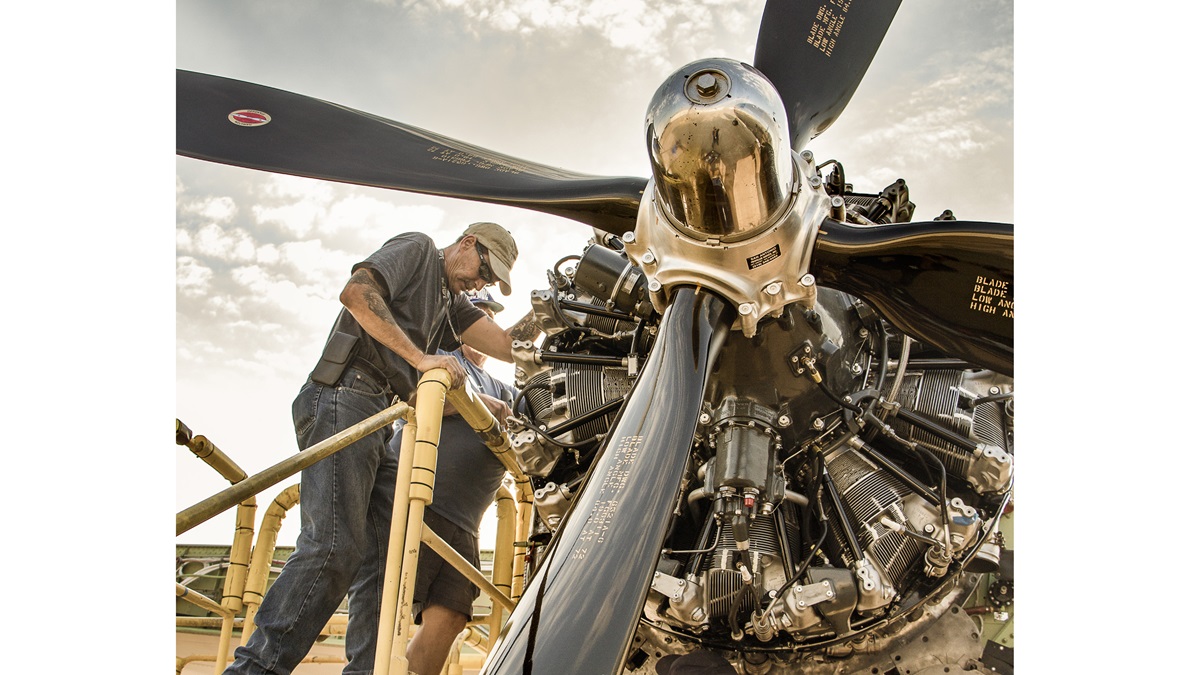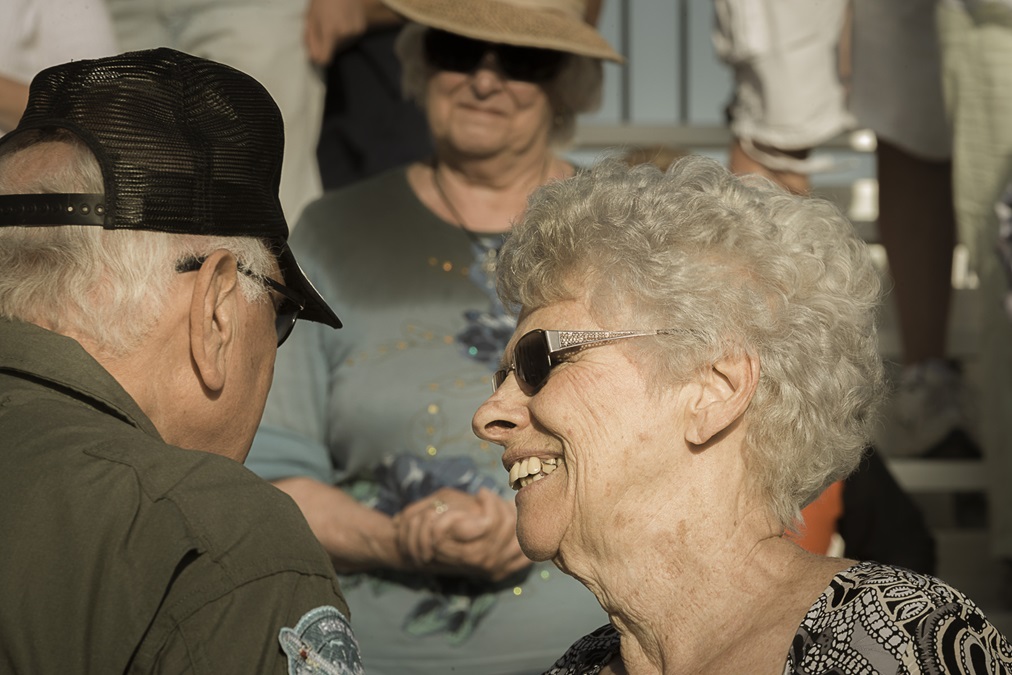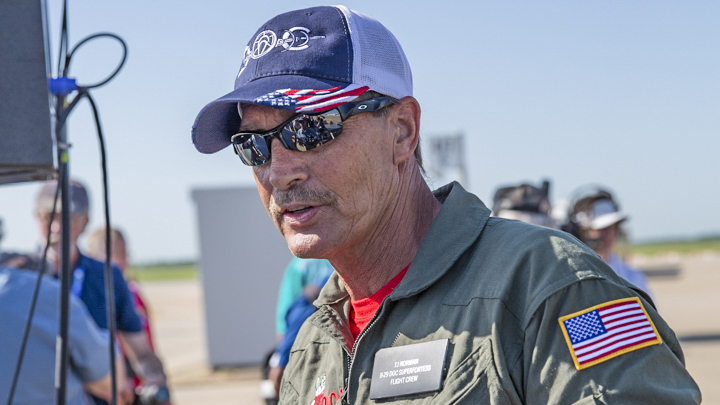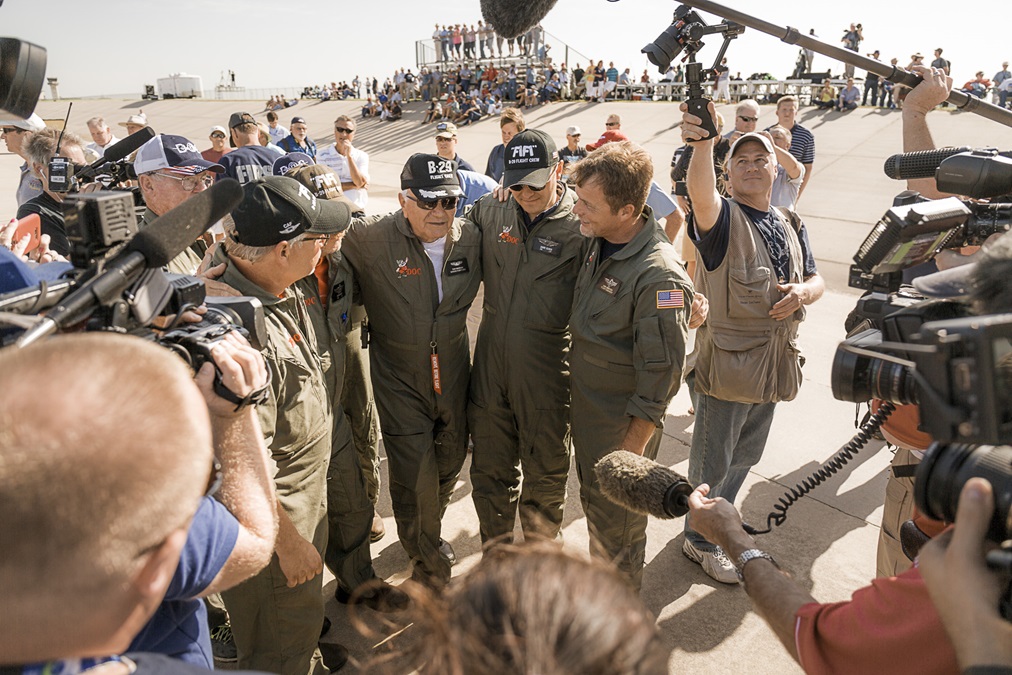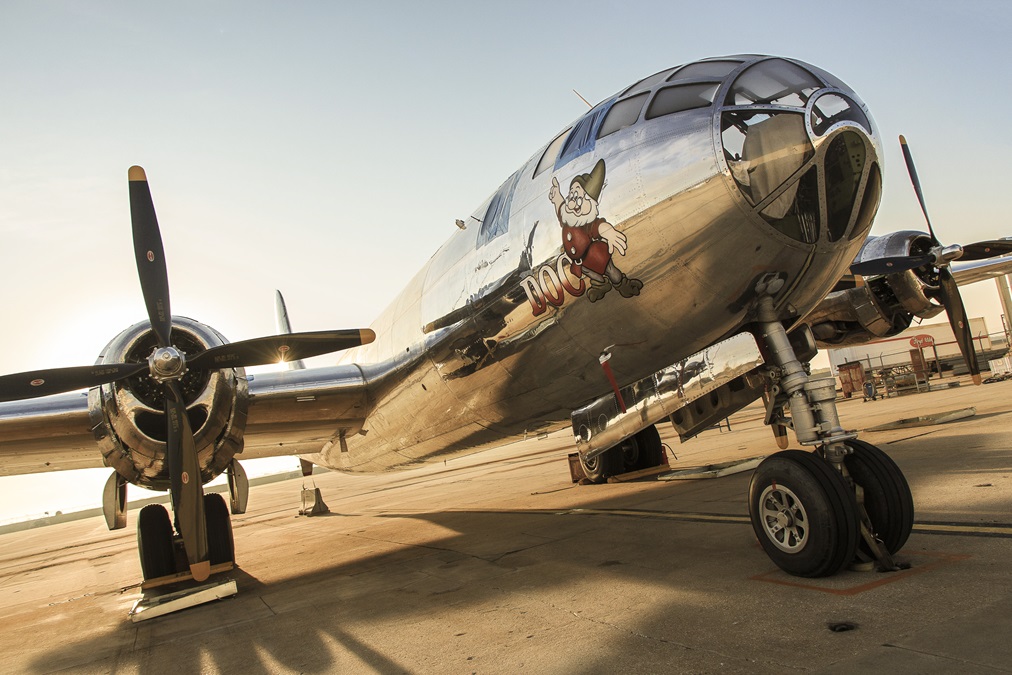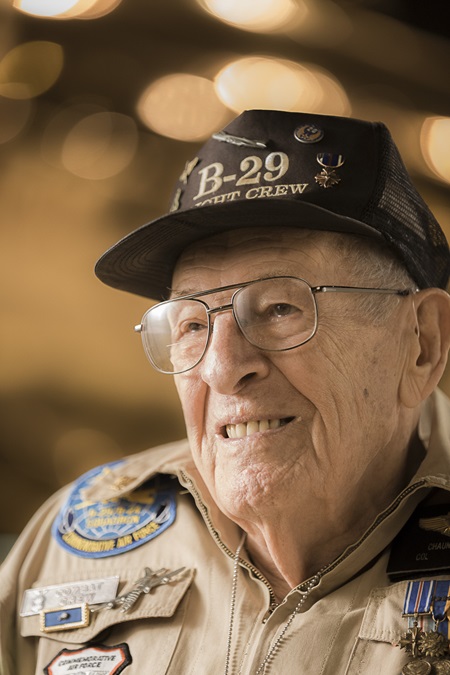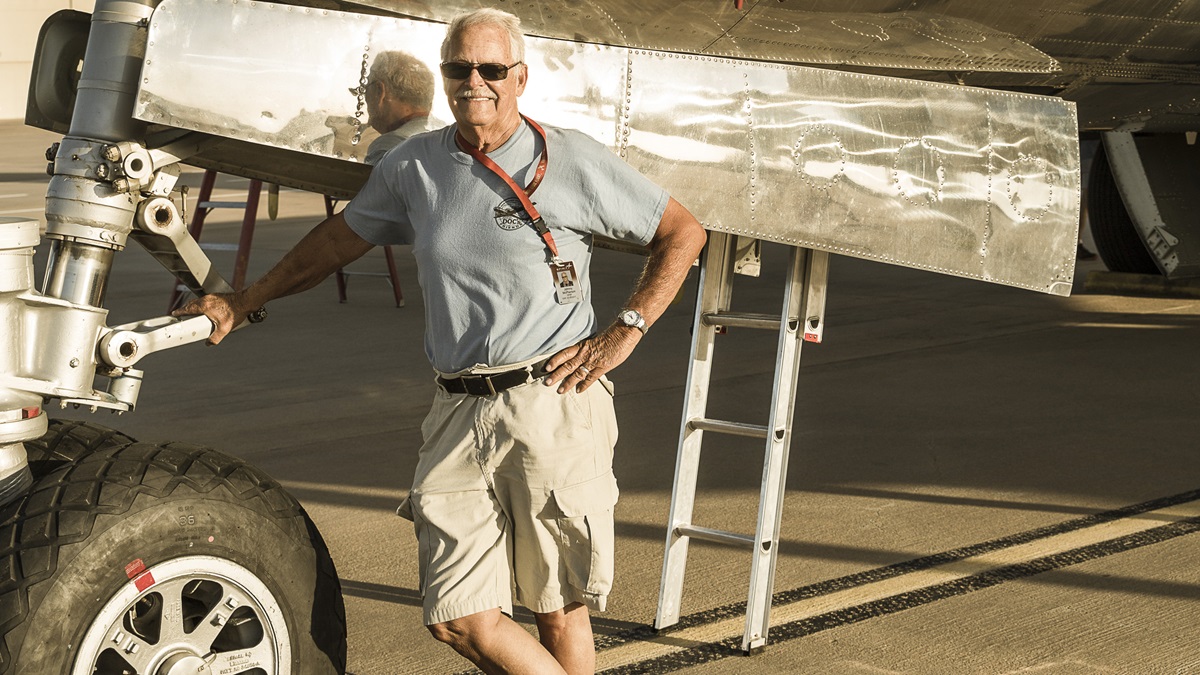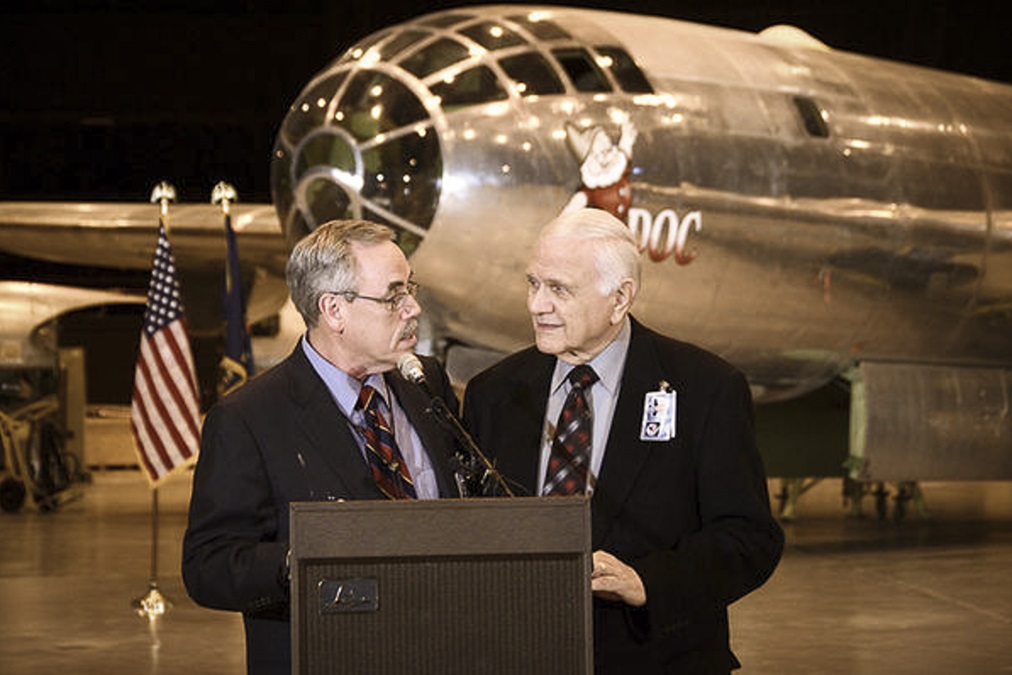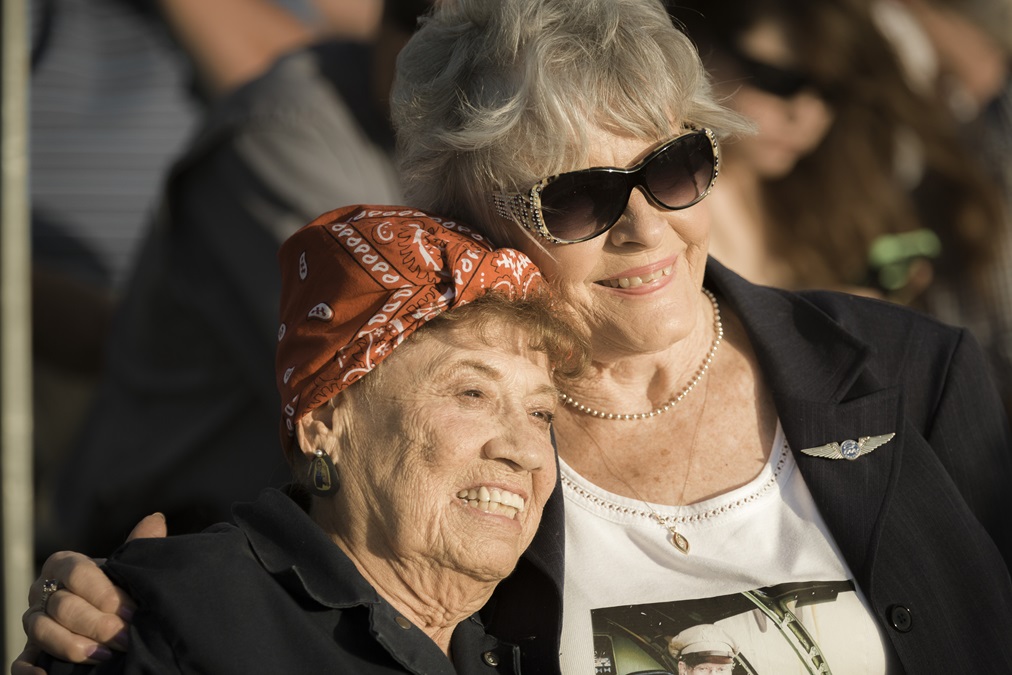'Doc's' friends
How volunteers found a cure for a B–29 on its last legs
A few pilots came close, but all missed the cockpit. A joke among restorers goes like this: “Thank goodness they were Navy pilots. If they had been Air Force they would have hit it.” (Hey, Navy, it’s just a joke.)
Fierce dedication from Tony Mazzolini, founder of Doc’s restoration, brought the bomber back to its birthplace at Wichita’s Spirit Aerosystems, formerly Boeing. Doc returned to the air July 17, 2016.
Restoration started slowly with help from some of the workers who built it in the 1940s, then stopped; the bomber lost its home and moved to another hangar. It wasn’t until Doc’s Friends was formed that restoration was completed. (Originally the organization was to be named Friends of Doc, but given the susceptibility of its nearly 17-foot-diameter propellers to foreign object damage, organizers wanted nothing to do with the acronym FOD.)
When the bomber’s mostly elderly volunteers first saw it 15 years ago, many thought the corroded beast might never fly again, yet none gave up. They worked for no money and got raises of equal value; pizza lunches were free. At least two broken bones occurred during the project, yet the injured volunteers returned when they recovered. Some spent their final years restoring it. Several who died implored fellow volunteers to finish it in their final days.
“After 15 years and almost 300,000 volunteer hours later, you get the airplane [sitting] over here,” said Jim Murphy, project manager. “We haven’t just refurbished the airplane, we have remanufactured it.”
All the volunteers will have their names inscribed on tiny plaques and placed inside the bomb bay doors. Here are their stories in their own words.
Finishing Doc for her husband
Dori Almire, tool crib attendant and parts chaser
“Everybody says, ‘Let her go chase it. She’s a chaser,’” she recalled. “Somebody says we need this or that. I will go look for it, and I usually find it. They all tease me about being a parts chaser.
“It’s a dream my husband’s had since the time it came off the desert. It will mean something sentimental because my husband was looking forward to this before he passed. He passed in 2012.
“My passion for my husband is what keeps me coming in. It’s his dream, so I’ve made it mine also. They had the rollout a couple of weeks ago. I just kind of sat there and reminisced a little bit and said to myself, this is a dream that he was hoping for—of course he didn’t live long enough.
“That’s OK. He’s seeing it.”
Mother’s ashes to be dispersed
T.J. Norman, restoration project director and crew member for the first flight
“Over the years we’ve had hundreds of people. Some of them lost interest. Some of them passed away. Some have gone on to different jobs elsewhere. We still had that core team of 30 to 50 people who are in love with this airplane.
“There is an ash dispenser on the tail. I plan on scattering my mom’s ashes. It is going to be the first one. I still have her ashes. My brother and I have already decided she’ll be the first one to go out of this airplane.
“With the age of the volunteers I made a rule: If you are older than the airplane, you can’t get on top of the wing. That only left a couple of us to do the work.
“We liken this to a big old elephant we are eating. It’s just one bite at a time. It you try to take on too much, you’ll go nuts.”
Cracked a wing over Japan
Charles Chauncey, World War II B–29 pilot
“I didn’t think Doc was ever going to get put together,” he said. “I was out here when they trucked it in in 2000. I worked on it a little with a screwdriver.
“It was quite an aircraft for its day. Actually, it was the biggest gamble the War Department made. That program cost $3 billion, and the Manhattan program cost $2 billion.
“It was a little heavy on the controls. It’s a good flying aircraft. You didn’t expect you would be doing any acrobatics in it. Our planes were so heavy that actually to make a turn, you could not hold the rudder [pedals] in. There was so much pressure you could just bump them.
“Made in the USA and tested over Japan. It was just an ongoing upgrade. There were 1,200 modifications.”
Dreamed of bombers as a child
Johnny McPhearson, lead man on sheet metal
“I was raised on a farm about 50 miles north of Wichita,” he said. “I can remember, when the war was ending, the bombers flying over when I was a little kid. I’d look at them from the yard and say, ‘Oh, I’d give anything some day just to touch one of those. I never dreamed that one day….
“When I retired in 1999 I read where they needed volunteers. The day I walked in I didn’t know a rivet from a screw.”
“I think a lot of us [had doubts] for a long time until the new group Doc's Friends’ took it over—all of a sudden we could see this thing was really going to go.
“I started with all zeros and they keep giving me raises with more zeros. If you can get me another raise, let me know.”
It began with his dream
Tony Mazzolini, project originator
“I was determined because I love the airplane. I had the distinct honor and pleasure of serving in the Air Force as a flight engineer—unfortunately not on B–29s, on other multiengine aircraft. My close association with Paul Tibbets and the Enola Gay crew, it just drove me towards it. I was determined to accomplish a difficult mission and I was going to do it.
“All of the obstacles in the middle of the road should have been deterrents for me and would have made any other normal person turn around and say, ‘The heck with it. I quit.’ But I didn’t. At the time I didn’t think about it. All I did was want to continue pressing forward.
“My dream was to recover it, restore it, and fly it. I wanted to have this as a flying museum to help tell the story of what our country went through during that time period, and to keep those memories alive. Those people that were on the home front that helped build these airplanes; the people that went into military service; those who had served, flown, built, and ultimately paid their sacrifice in this aircraft—I wanted to honor them.
“You know, I came from the generation which is part of the Greatest Generation. I want to keep those memories alive. Our younger generation, our current generation, and future generations do not know this history. This is a way of bringing it to them.”
The man who said yes
Jeff Turner, chairman of the board, Doc's Friends; former president and CEO, Spirit Aerosystems
“We were trying to think of what to put on Tony [Mazzolini]’s business card. We didn’t think ‘savior’ was maybe the right thing. But without Tony there’d be no Doc.
“I became a private pilot within the last five years before I turned 60. I’m one of those great AOPA members who prove it’s never too late.
“We want the airplane to go around the United States to be seen and connect people to their aviation heritage.
“We have Connie [Palacioz, age 91], our Rosie the Riveter. She fell and broke her leg. I went to see her in the hospital. She said, ‘If they just bring me some parts, I could work on them.’”
Email [email protected]
Find out more about the project online.

